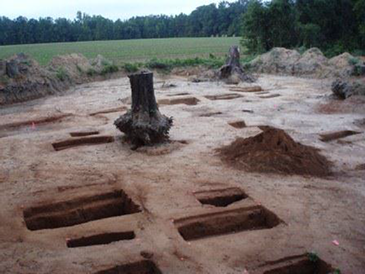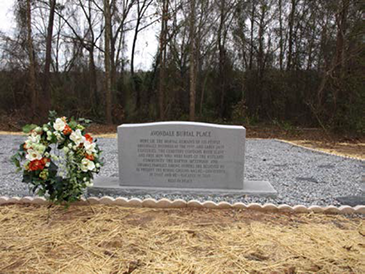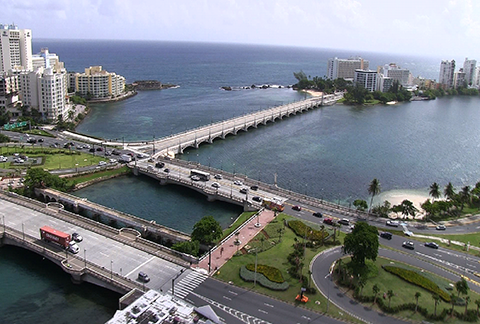Award-Winning Projects Exemplify Streamlining and Stewardship
The Federal Highway Administration (FHWA) recently announced the 2012 Exemplary Human Environment Initiatives (EHEI) and Exemplary Ecosystem Initiatives (EEI) award recipients. For many years, FHWA has recognized transportation and transportation-related projects that encourage better environmental outcomes for natural habitats and human activities. FHWA launched the EEI program in 2002 and the EHEI program in 2007.
This issue of Successes in Stewardship presents information about the EHEI and EEI programs, showcases the 2012 award recipients, and provides brief overviews of two of the award-winning EHEI projects.
Awards Criteria
The EHEI awards recognize outstanding examples of transportation projects that create or improve conditions for human activities while protecting the natural environment. The EEI awards highlight projects that promote environmental interests by using cutting-edge science and technology, applying high environmental standards, or producing high-quality results.
Nominations for EHEIs must fall under one of the following categories: Education and Training Programs, Enhancing the Environment for Human Activities, Encouraging Nonmotorized Transportation, Process Improvements, Product Development, and Other, which includes activities like freight planning and economic development that may not fit under any of the other categories. The EEIs do not have specific categories.
Each year, FHWA Division Offices, Federal Lands Highway Division Offices, and the FHWA Resource Center nominate State Departments of Transportation (DOTs) projects to be considered for an EHEI or EEI award. FHWA Headquarters staff evaluates the submitted applications according to the specific criteria, which are described in detail on the EHEI and EEI websites.
Award Recipients
The text box to the right lists the 2012 EHEI and EEI award recipients. To learn more about each of the award-winning projects, visit the 2012 EHEI and EEI websites. The following sections feature two 2012 EHEI award recipients that demonstrated a commitment to promoting awareness of cultural and historic resources.

During work for the Sardis Church Road project, GDOT identified an unmarked cemetery in Bibb County, Georgia, which led to the Avondale Burial Place project. (Courtesy of New South Associates)

The Avondale Burial Place project resulted in the successful relocation of the burial site. (Courtesy of GDOT)
Avondale Burial Place
During the final planning stages of the Georgia Department of Transportation’s (GDOT) proposed extension of Sardis Church Road in southern Bibb County, Georgia, a local resident notified the agency of a potential historic cemetery in the area. The site had no above-ground markers or other identifiable burial features. In response to this comment, GDOT tested the site for possible human remains and located 101 burials. Since the planned road extension would run through the burial site and GDOT was unable to avoid impacting the site, the agency faced the challenge of relocating the burials. GDOT hired a local consultant that specializes in cultural resource management to assist with the relocation and to perform research to uncover the history of the site. Research yielded only a few clues about the site’s original name, so GDOT and the consultant named the cemetery, “Avondale Burial Place,” after the site’s close proximity to the Avondale Mill Road.
Through their research, GDOT and the consultant learned about a dispersed African-American community that once resided in Southern Bibb County in the nineteenth and early twentieth centuries. They conducted public outreach efforts to share the information found during their research and to identify living descendants of the families buried at the site. As a result of this outreach, the consultant confirmed that the Barton-Thomas family had been living in the area since the nineteenth century and had family buried at the site. Working with the family, GDOT and the consultant relocated the burials and held a dedication ceremony to honor the family’s past. While State DOT practices typically discourage disinterment and relocation, in this case these actions led to the cemetery’s protection and reconnection to the history of Bibb County.
The Avondale Burial Place project demonstrates GDOT’s strong commitment to local heritage and education. Throughout the project, GDOT and the consultant worked with the community, including the Barton-Thomas family, and conducted research to better understand cultural artifacts found at the burial site and past ways of life. These artifacts included personal objects like wedding bands, necklaces, a coin purse, and combs buried as part of the family’s traditions. To promote public knowledge of the project, GDOT and its consultant worked with FHWA and Georgia Public Broadcasting to produce a project website, a documentary film about the burials, “I Remember, I Believe,” and a historical and archaeological report. According to GDOT, the Avondale Burial Place project serves as a “legacy” in that its deliverables will live on beyond the transportation aspects of the corridor project.
Dos Hermanos Bridge
Completed in 2011, the Dos Hermanos Bridge in San Juan, Puerto Rico, represents how historical considerations can be comprehensively addressed as part of a bridge replacement project. The bridge, which links Old San Juan to other parts of the city, is one of the most heavily traveled transportation corridors in Puerto Rico. As the project is located in an area with sensitive environmental features and historic and archaeological resources, the project’s lead agency, the Puerto Rico Highway and Transportation Authority (PRHTA), granted significant attention to these considerations. PRHTA and its partners, including the FHWA Puerto Rico Division Office, Puerto Rico Cultural Institute, Puerto Rico Department of Natural Resources, Puerto Rico Environmental Quality Board, Puerto Rico State Historic Preservation Office (SHPO), South Atlantic Division of the U.S. Army Corps of Engineers, and the U.S. Fish and Wildlife Service Caribbean Ecological Services Field Office focused on the project’s infrastructure needs as well as minimizing impacts to the site. The project involved the replacement of a structurally deficient bridge with a new four-lane, arched-beam bridge that features sidewalks, a bicycle lane, traffic monitoring cameras, and lighting.

The Dos Hermanos Bridge project addresses environmental, historical, and cultural considerations in addition to traditional transportation needs. (Courtesy of FHWA Puerto Rico Division Office)
As part of the Section 106 consultation required under the National Historic Preservation Act, the Puerto Rico SHPO assisted PRHTA and its partners in considering the project’s potential impacts on nearby cultural resources, including the ruins of Fort San Antonio, a Spanish fort that guarded the area against a British attack in the late 1790s. To limit impacts, the agencies established an archaeological treatment plan, demolished the old bridge without using explosives, and operated low-impact equipment, like specially designed platforms and barges. The plan also outlined requirements for debris and dust removal and seismic monitoring to ensure that construction activities did not cause damage. In addition to its focus on cultural preservation, the project also mitigated impacts to environmentally sensitive habitats in the area, including local sea grasses that support marine life. As a result of its sensitivity to the significant historic and environmental features in the vicinity, the project was able to avoid long-term impacts to these important resources.
Incorporating the Principles of the EHEI and EEI Programs
FHWA’s EHEI and EEI award programs showcase recent projects in a variety of contexts that can be instructive to Federal and State agencies across the United States. The 2012 award recipients demonstrate a commitment to the values of the EHEI and EEI programs through their partnerships and collaboration, environmental stewardship, and advancement of the state of the practice of transportation infrastructure. These award-winning projects provide good models for other agencies that are considering the incorporation of the program’s principles into their own projects.
Contact Information
For EHEI Program:
Brenda Kragh
Office of Human Environment
Federal Highway Administration
brenda.kragh@dot.gov
(202) 366-2064
For EEI Program:
Marlys Osterhues
Office of Project Development and Environmental Review
Federal Highway Administration
marlys.osterhues@dot.gov
(202) 366-2052
Look What’s New!
- On, March 12, 2013, FHWA will host a Planning and Environmental Linkages (PEL) for Historic Preservation webinar to present the results of the Planning and Environmental Linkages for Historic Preservation report, which is a recent nationwide study to identify best practices for integrating planning and environmental review for projects affecting historic resources. The webinar will be held from 12:00 to 1:30 p.m. Eastern. Visit the National Highway Institute website to register.
- FHWA’s Environmental Review Toolkit recently updated the PEL web page with a new, user-friendly format. PEL represents a collaborative and integrated approach to transportation decisionmaking that considers environmental, community, and economic goals early in the transportation planning process, and uses the information, analysis, and products developed during planning to inform the environmental review process.
- FHWA recently published case studies of best practices for addressing environmental justice as part of the environmental review process under the National Environmental Policy Act. The case studies provide examples from 10 recent transportation projects throughout the country, including both neighborhood-scale projects and those involving entire metro areas or regions. Click here for more information.
- Through the Second Strategic Highway Research Program, FHWA and the American Association of Highway and Transportation Officials are announcing implementation assistance funding associated with Eco-Logical. Funding will be available for Lead Adopters, agencies that have already begun to implement the Eco-Logical approach, and User Incentives, agencies that are interested in introducing the approach into a project or program. The applications are available at www.fhwa.dot.gov/goshrp2 and are due on March 22.
- In an effort to continuously support practitioners in advancing livability, the FHWA Livability Team has developed several new online resources. The Livable Communities Discussion Board, a “community of practice,” will serve as a forum for practitioners to discuss topics and share information related to livability. The site includes resources and discussions on topics such as performance measures, environmental justice, complete streets, walking and bicycling, tools and technology, and performance measures.
- Additionally, the FHWA Livability Team reorganized the FHWA Livability website and added new fact sheets and case studies. The case study page is now organized by the six livability principles, making it easier to locate case studies by livability principles. The resources page also provides easier navigation and includes new items. Please visit the FHWA Livability website to access these and other resources.
Successes in Stewardship is a Federal Highway Administration newsletter highlighting current environmental streamlining and stewardship practices from around the country. Click here to subscribe to the newsletter, or call 617-494-2092 for more information.

